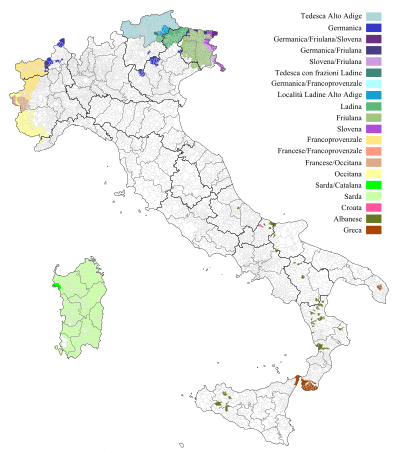It is commonly known that the national language of Italy is Italian but maybe one does not know that it is not the only one. In this article, we do not want to talk about the various dialects that distinguish every state but about the minority languages spoken inside the Italian country and recognized by law. They are mother tongues for a part of Italians that differentiates from the Italian speaking majority.
In 1992 a law was passed recognising and protecting the existence of twelve linguistic minorities. They are Albanian, Catalan, German, Greek, Slovenian, Croatian, French, Provençal, Friulan, Ladin, Occitan and Sardinian. Thanks to this law, the language, the cultural heritage and the traditions of almost 2.500.000 speakers are protected as well as their sense of belonging to something different and more personal than the national culture. These languages indeed are taught at school and the administration provides bilingual texts.
One of the reasons of the bilingualism is the geographic proximity to foreign countries, like for Provençal and Occitan spoken in Piedmont and Valle d’Aosta, for German spoken in South Tyrol and for Slovenian spoken in Friuli. In the southern part of Italy, the linguistic variety is the result of the immigration during the Middle Ages and the modern age: one evidence of that is Greek language spoken in Apulia and Calabria, in Albanian spoken in the central and southern part of Italy, in Croatian spoken in Molise and in Catalan spoken in Sardinia. Besides these linguistic minorities, the 1992 law protects some dialects that are considered autonomous from the other ones like Sardinian (with over one million speakers), Friulan (400.000 speakers) and Ladin (spoken by over 250.000 speakers in some parts of Veneto and Trentino).
Source of the image: https://upload.wikimedia.org/wikipedia/commons/1/1c/Minoranze_linguistiche_it.svg
Author: Martina Tonizzo








